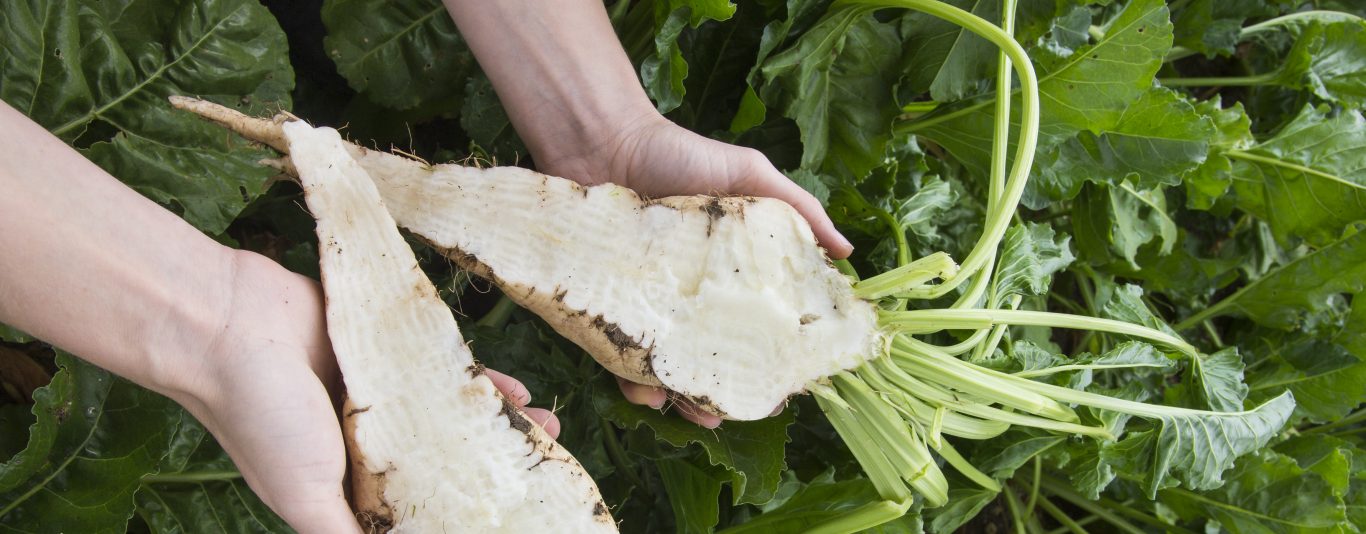News
10 things you didn’t know about sugar beet!

Key points for you to remember about this raw material. Nothing is wasted with sugar beet—everything is processed.
Optimizing raw materials and reducing waste are two of Tereos’ main commitments. This is the logic of the circular economy, which is at the heart of our production and transformation activities. Sugar beet, for example, is utilized in 99% of our operations: all the different elements that make up this plant have a use.
Sugar beet alone is the real hero of the circular economy! Nothing is wasted: the leaves are a natural fertilizer; the sugar extracted is an ingredient for many industries, such as food, pharmaceutical, and cosmetic; the pulp is utilized for animal feed; water is used for washing and fertigation; molasses are a key ingredient in the production of alcohol and, lastly, carbonation sludge provides nutrients for agricultural soils. Result: production without waste
1/ A member of the Chenopodiaceae family, sugar beet is a plant that, along with sugarcane, constitutes one of the two main sources of sucrose worldwide.
2/ The sugar from sugar beet was first extracted in 1811 by the French chemist, Jean-Baptiste Quéruel. Napoleon I had encouraged this research following a blockade of the British navy that cut the French Empire and Europe off from sugarcane resources from the Caribbean.
3/ In moderate climate zones, seeds are sown in March and the harvest, otherwise referred to as the campaign, begins in September. The sugar beet are then washed, cut and passed through hot water.
4/ Sugar is stored in the root of the plant. Its concentrated juice forms a syrup which is purified and filtered, with a sugar content of 65%. It is then boiled under vacuum to be crystallized. The sugar from sugar beet is naturally white.
5/ Tereos also uses this raw material to manufacture conventional bioethanol produced from sugar beet juice. On average, one metric ton of sugar beet produces 90 to 100 liters of alcohol. Each year, Tereos also produces more than 2 million tons of sugar, and 675,000 m3 of alcohol and ethanol.
6/ Sugar beet may also be used for animal feed: the fibers resulting from juice extraction, called pulp, are used as a food for livestock.
7/ Thanks to a methanization process, sugar beet’s transformation also fuels the boilers through biogas (a gas produced from fermenting organic materials in the absence of oxygen) and vinasses (residue from the distillation of alcoholic liquid). These transformations decrease the amount of CO2 released into the atmosphere, and facilitate significant energy savings.
8/ Sugar beet is 72% water. Tereos makes maximum use of this, by reintroducing it during the sugar production process, as well as the natural environment, in particular through the process of fertigation.
9/ France is the world’s leading producer of sugar beet sugar. The average yield for sugar beet is around 1.3 kg of sugar per square meter of crop.
10/ Over 20 million tons of sugar beet have been transformed by Tereos for the first post-quotas campaign (2017-18), an increase of 30% compared to the previous year. The Group holds the record for the longest campaign of French sugar factories.
